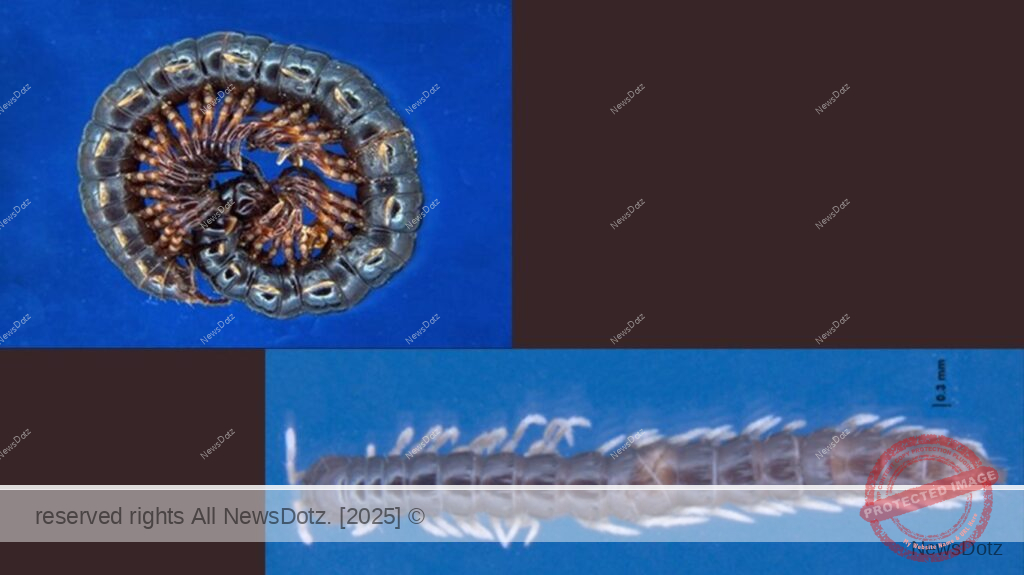Two new millipede species discovered in India’s Western Ghats highlight the region’s biodiversity and the ecological importance of millipedes as natural decomposers enriching soil and supporting ecosystem balance
Anshu Kashid
Pune| May 30, 2025: In a significant discovery for biodiversity research, two new species of millipedes have been identified in India’s lush Western Ghats—Polydrepanum xiphosum and Polydrepanum spinatum. The findings were officially published in the prestigious journal Zootaxa, based in New Zealand.
These new species hail from Maharashtra and Kerala, perfecting the known diversity of millipedes in the region. Belonging to the rubric Polydrepanum under the family Paradoxosomatidae, these additions bring the total given species in this rubric to six — all of which are simply set up in the Western Ghats, emphasizing the region’s ecological oneness.
The exploration was commanded by a devoted platoon of Indian scientists — Dr. Aparna Sureshchandra Kalawate from the Zoological check of India, Pune; Dr. Sudhikumar Ambalaparambil, Head of Zoology at Christ College, Kerala; and exploration scholars Muhsina Musthafa and Pooja Misal from Christ College and Shivaji University, independently.
India presently records around 270 species of millipedes, with over 70 being aboriginal. South India, particularly the rain- soaked zones of the Western and Eastern Ghats, is a known hotspot for these frequently- overlooked soil- residers.
Though small and humble in appearance, millipedes play a vital role in the ecosystem. As major decomposers, they break down decaying plant matter, accelerating microbial activity and releasing key nutrients like nitrogen back into the soil—critical for plant growth. Even though they directly contribute only about 10% to plant litter decomposition, their feeding behavior enhances microbial breakdown that handles up to 90% of the litter.
Millipedes are generally set up in wettish, shadowed surroundings under splint waste, soil, and damp areas. inoffensive andnon-venomous, they defend themselves by entwining up or concealing mild chemical annoyances when hovered .
Their discovery not only highlights the importance of conserving the Western Ghats but also draws attention to the vital ecological services provided by millipedes, which often go unnoticed beneath our feet.
Instagram – https://www.instagram.com/newsdotz/
Youtube – https://www.youtube.com/@NewsDotz
Facebook – https://www.facebook.com/profile.php?id=61573903448264
Read – https://newsdotz.com/

